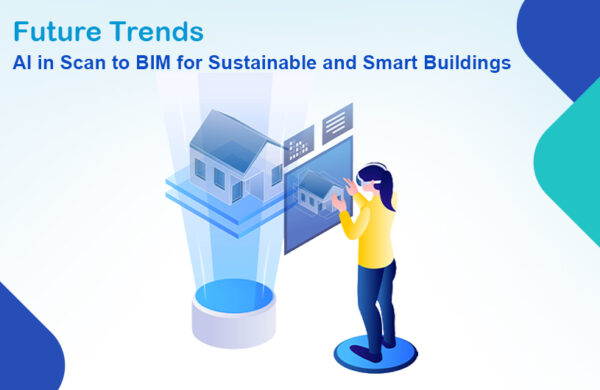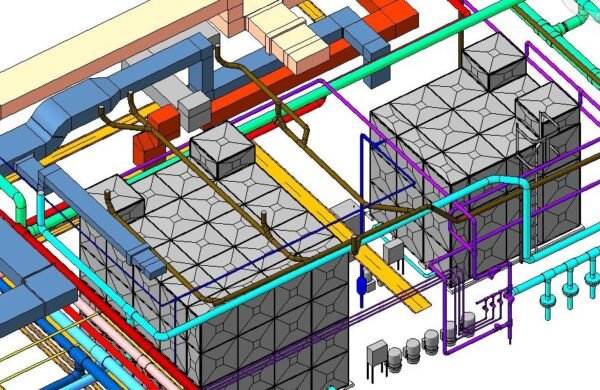Building Information Modeling (BIM) has revolutionized the construction industry by providing comprehensive digital representations of physical and functional characteristics of spaces. In electrical engineering, BIM has become a crucial tool for designing, planning, and managing electrical systems. As technology continues to evolve, several emerging trends are set to shape the future of Electrical BIM modeling. Here’s a look at what to expect:
Integration with IoT and Smart Systems
The Internet of Things (IoT) is rapidly transforming various industries, and BIM is no exception. Future BIM models will increasingly integrate IoT devices, allowing real-time data collection and analysis. This integration will enable smarter electrical systems that can adapt to changing conditions, optimize energy consumption, and enhance overall building performance. For instance, sensors embedded in electrical systems can provide data on energy usage, enabling predictive maintenance and more efficient energy management.
Artificial Intelligence and Machine Learning
Artificial Intelligence (AI) and Machine Learning (ML) are set to play a significant role in the future of Electrical BIM. These technologies can analyze vast amounts of data to optimize electrical designs, predict potential issues, and suggest improvements. AI-driven algorithms can automate routine tasks, such as clash detection and code compliance checks, significantly reducing design time and human error. Additionally, machine learning models can learn from past projects to improve the accuracy and efficiency of electrical system designs.
Enhanced Collaboration Tools
Collaboration is at the heart of BIM, and future developments will see even more advanced collaboration tools. Cloud-based platforms will continue to evolve, offering real-time collaboration across different disciplines and geographic locations. These platforms will support better coordination between electrical engineers, architects, and other stakeholders, ensuring that everyone is working with the most up-to-date information. Enhanced collaboration tools will also include more intuitive user interfaces and immersive technologies like Virtual Reality (VR) and Augmented Reality (AR) to facilitate better understanding and communication of complex electrical systems.
Sustainability and Energy Efficiency
Sustainability is becoming a critical focus in the construction industry, and BIM is a powerful tool for achieving energy-efficient designs. Future trends in Electrical BIM will emphasize the integration of renewable energy sources, energy-efficient lighting, and smart grid technologies. BIM models will incorporate detailed simulations to predict the energy performance of electrical systems, helping designers to make informed decisions that minimize environmental impact. Additionally, regulatory requirements and green building certifications will drive the adoption of sustainable practices in BIM workflows.
Advanced Simulation and Visualization
The ability to simulate and visualize electrical systems in a virtual environment is one of the key advantages of BIM. Future advancements will see more sophisticated simulation tools that can model complex electrical behaviours with greater accuracy. For example, dynamic simulations of electrical loads and power distribution will enable engineers to optimize system performance under various scenarios. Enhanced visualization techniques, including high-definition 3D renderings and interactive VR experiences, will provide clearer insights into electrical designs, making it easier to identify and resolve potential issues early in the project lifecycle.
Integration with Construction Robotics
The construction industry is witnessing a rise in the use of robotics for various tasks, from site surveying to material handling. Future BIM models will integrate with construction robotics to streamline the implementation of electrical systems. Robots equipped with BIM data can precisely execute tasks such as cable routing, installation of electrical components, and even site inspections. This integration will improve accuracy, reduce labor costs, and enhance safety on construction sites.
Blockchain Technology for Data Security
As BIM becomes more collaborative and data-intensive, ensuring the security and integrity of BIM data is paramount. Blockchain technology offers a promising solution by providing a secure, decentralized platform for storing and sharing BIM data. Blockchain can track changes to the BIM model, ensuring that all modifications are transparent and tamper-proof. This will enhance trust among project stakeholders and protect sensitive information from cyber threats.
Conclusion
The future of Electrical BIM modeling technology is poised for significant advancements, driven by the integration of IoT, AI, and other cutting-edge technologies. These trends will enhance the efficiency, accuracy, and sustainability of electrical system designs, ultimately leading to smarter and more resilient buildings. As the industry continues to evolve, staying abreast of these trends will be crucial for professionals seeking to leverage the full potential of BIM in their projects.
At Monarch Innovation, we are at the forefront of these technological advancements, providing innovative BIM solutions tailored to your specific needs. Whether you are looking to integrate IoT into your electrical systems, utilize AI for optimizing designs, or enhance collaboration across your team, we have the expertise to help you succeed.
Contact us today to learn more about how we can assist you in harnessing the future trends in Electrical BIM modeling technology.
Visit our website: Monarch Innovation
Email us: info@monovative.com





